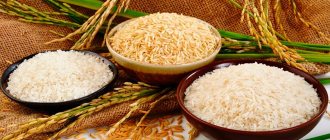Many lovers of chocolate treats don’t even think about the difference between dark chocolate and dark chocolate. After all, both are wildly popular among consumers of different ages. But the difference between these two types of sweets is quite significant.
Useful properties of chocolate
Many people believe that chocolate is a harmful product. However, it is not. Dark and bitter chocolate is one of the healthiest products that has a number of advantages:
- It has a beneficial effect on the skin, and therefore is often used for cosmetic masks.
- Cocoa has a beneficial effect on hair, supporting its growth and healthy condition.
- High-quality chocolate is a dietary product. In moderation, this delicacy is allowed even with very strict diets.
- Cocoa stabilizes blood cholesterol levels and prevents the appearance of varicose veins.
- Chocolate is an excellent means of preventing cardiovascular diseases.
- The delicacy can provide a person with a huge amount of energy.
- Cocoa is rich in active antioxidants and is a preventative against cancer.
A high quality product can improve a person’s emotional state.
Avoid Dutch Processed Chocolate
Dutching is a method of processing chocolate that results in alkalization of the cocoa. The method is used to change the color of chocolate and reduce the characteristic bitterness. However, studies have shown that Dutch processing leads to a decrease in flavonoids and antioxidants, which means a loss of nutrients. Therefore, chocolate that has been subjected to this processing method should be avoided.
To make sure the chocolate has been Dutch-processed, look for a label on the packaging that says something like “cocoa processed with alkali.”
Dutch processing negatively affects the beneficial qualities of chocolate
Which chocolate is called dark and which is bitter?
The main component of chocolate, both dark and bitter, is cocoa. During the production process, the proportions of the main ingredient and sugar change. Thus, the taste of the original raw material changes from bitter to sweeter. Bitter chocolate is the one that contains more cocoa, and the product with a predominance of sugar is called dark.
Some varieties of dark chocolate contain additional components that improve the taste and add interesting “notes” to it. Typically, manufacturers use nuts, raisins, vanilla, and dried fruits as auxiliary ingredients. Some brands offer customers chocolate with saltine crackers or peanuts.
Sugar
Sugar is often added to dark chocolate to soften its bitter taste. While sugar is an integral part of dark chocolate, some manufacturers go overboard with the amount.
We recommend watching: shocking anti-sugar advertisement
Today it is rare to find chocolate without added sugar. In this case, follow the golden rule: the further sugar is indicated in the composition, the better. Better yet, choose the chocolate where sugar is listed last.
The higher the cocoa percentage, the less sugar the chocolate contains.
What is the difference between dark chocolate and dark chocolate?
As mentioned, the main difference lies in the proportions of sugar and cocoa liquor present in the chocolate bar. There are other differences between dark chocolate and its dark counterpart.
The first, oddly enough, is a healthy treat. Moderate consumption of the product may even promote weight loss. The reason is its composition.
The proportion of cocoa liquor in dark chocolate should be at least fifty-five percent. More than thirty percent comes from whole cocoa butter. In addition, dark chocolate must meet all requirements and comply with GOST.
Dark chocolate is widely used in making desserts, ice cream, cakes and other delicious dishes. Unlike its bitter counterpart, it has a number of minimal and not very strict requirements. Thus, the mass fraction of cocoa in such chocolate should be at least twenty percent.
This is the main difference between dark chocolate and dark chocolate.
About consumer culture and harm
Continuing the topic of the benefits and harms of dark chocolate, it is worth noting that eating no more than 30 grams of the product per day is useful in every sense, because it:
- makes us happier due to stimulation of the production of the hormone of joy - endorphin;
- invigorates, thanks to caffeine and theobromine included in its composition;
- slows down the aging of the body;
- stimulates brain activity;
- provides maximum saturation with vitamins and microelements.
Constant abuse of your favorite treat in quantities exceeding the norm inevitably leads to weight gain for most people. A confectionery product can become “harmful” for those who cannot stop themselves and eat the entire bar at once. Therefore, we should not forget about the culture of its consumption. In order to get gastronomic pleasure, a few slices from the bar are enough - the taste of dark chocolate is very rich.
Anyone with diabetes should be careful when consuming this sweet product - it contains a high level of fast carbohydrates, the processing of which requires insulin. To complete the digestive chain and completely digest chocolate, you will need a sufficient amount of pancreatic enzymes, which are absent if metabolic processes in the body are disrupted. Chocolate has always been considered a strong allergen along with citrus fruits and strawberries. We must not forget about allergic reactions, which can be triggered by a large percentage of cocoa and cocoa butter to the other ingredients of the dessert.
Health benefits of dark chocolate
Dark chocolate has a very rich assortment. Products containing at least forty percent grated cocoa have good taste.
In addition, one hundred grams of dark chocolate contains:
- 48% carbohydrates;
- 44% fat;
- 8% proteins.
The components of the treat are potassium, phosphorus, magnesium, calcium, sodium, iron (in small quantities). Chocolate contains vitamins. The calorie content of one hundred grams is on average 550-650 kilocalories.
You can see different types of delicacies on grocery store shelves. Depending on the shape and consistency of the product, there are slab, monolithic and porous dark chocolate. The first is produced in the form of identical tiles. Monolithic chocolate has no decoration and is produced in one piece. This delicacy is quite difficult to find in mass consumer stores. Porous chocolate has an airy structure. One of the most popular products in this category is Air chocolate.
The delicacy may contain additional components, or may be produced in its pure form. According to production technology, dark chocolate can be ordinary or dessert. The latter type belongs to the elite category. This is a very delicate product with a unique taste. Its distinctive feature is that only noble varieties of cocoa are used for production. That is why the cost of such a product is quite high.
Attention to composition
The best dark chocolate has the most concise ingredients. Usually the first ingredient in excellent quality chocolate is cocoa. You may come across several designations - cocoa powder, cocoa nibs or cocoa butter. All of these are acceptable additions to dark chocolate.
Sometimes other ingredients are added to dark chocolate to improve its appearance, taste and shelf life. Some of these ingredients are completely harmless, while others can negatively affect the overall quality of the chocolate.
Composition of dark chocolate
All types of dark chocolate differ depending on the percentage of crushed cocoa beans and the taste characteristics of the product. On store shelves you can find treats containing 55%, 65%, 70%, 80%, 90% and even 99% of the main component.
In addition to cocoa, dark chocolate contains sugar and cocoa butter.
According to taste characteristics, dark chocolate is divided into two types - bitter and sweet. And they, in turn, are characterized by corresponding tastes.
The first one can be very bitter, semi-bitter and moderately bitter. Bittersweet chocolate has similar degrees.
The first is produced from cocoa beans that are not of the highest quality, the second is made from selected varieties by long-term kneading of the chocolate mass, which makes the taste noble and subtle.
One hundred grams of the treat, which contains at least sixty percent cocoa, contains:
- water – 0.8 g;
- proteins – 6.2 g;
- fats – 35.4 g;
- carbohydrates – 48.2 g;
- dietary fiber – 0.8 g.
The calorie content of the product is on average 540 kilocalories.
Production
The technological process consists of several stages.
- First. Processing of cocoa beans (cleaning and sorting, roasting and crushing).
- Second. Preparation of grated cocoa (grinding cocoa grains to a size of 30 microns).
- Third. Production of cocoa butter (pressing with a hydraulic press and separating into cake and oil).
- Fourth. Production of chocolate mass on an automatic production line.
- Fifth. Further grinding, conching, tempering, molding. After these complex processes, chocolate is obtained in its usual form. All that remains is to wrap and pack.
Of course, you won’t be able to reproduce the whole process at home, but there is an interesting recipe using ready-made products. Melt cocoa powder (125 g) in a water bath and add it to melted cocoa butter (75 g), and then bring it to a homogeneous mixture over low heat and after cooling, you can get real dark chocolate. Honey or sugar, as well as nuts, are added to the recipe to taste.
Which is healthier?
Once it becomes clear how dark chocolate differs from dark chocolate, another question arises. It worries consumers no less, and sometimes even becomes the main one at the delicacy counter. Indeed, everyone is interested in which chocolate is better: dark or bitter.
The greatest benefit for the body is a product with a high cocoa content. Accordingly, to improve your health, it is better to consume dark chocolate. The dark analogue contains the same beneficial substances, only in smaller quantities.
What should chocolate be like?
When choosing, not only the product label with its composition deserves special attention, but also the appearance of the delicacy. It is necessary to pay attention to the surface of the chocolate: it should be glossy, shiny and have a rich brown color. If the color of the product is too dark, close to black, it indicates the presence of dyes in the composition. A white tint on the surface indicates the presence of foreign components, so-called additives. Very often, preservatives are contained in products from unscrupulous manufacturers.
Dark and bitter chocolate - there is no difference - should be solid (under no circumstances melt in your hands), and during the breaking process should not crumble, but produce an attractive and distinct crunch. In the cut, have a matte texture, remain dense and solid.
How many calories are in chocolate: let's look at the details
There are many varieties of chocolate. And they are all different in kilocalorie content. If you choose the right composition of chocolate, then it is quite possible not to harm your figure. And the main thing is to be able to distinguish counterfeit vegetable fats from real chocolate.
The energy value of chocolate depends on the ingredients that were added by the manufacturer. There is a lot of so-called diet chocolate on the market. The manufacturer intends to reduce calories using additives, thereby attracting the attention of buyers who watch their figure and nutrition. But this chocolate is not entirely healthy.
Supplements that reduce calorie content are chemical components and can harm the body. The manufacturer reduces not only the calories in chocolate, but also the amount of chocolate itself in the product.
As a result, this significantly reduces the price of the treat and makes low-calorie chocolate more accessible to consumers. It is worth noting that consuming such chocolate can negatively affect human health. Many people experience various allergic reactions to chemicals of this kind.
How to store
The shelf life of high-quality chocolate is usually a year, maximum one and a half. The storage temperature should be seventeen to twenty degrees. For long-term preservation of the dessert, foil or original packaging is suitable.
So, the main difference between dark and bitter chocolate is the percentage of cocoa mass (only high-quality treats that do not contain preservatives are taken into account). The selection criteria for both species are identical. Therefore, the main factor when buying a delicacy is often taste preferences and its quality characteristics.
What brands should you pay attention to?
The most beloved producers of high-quality dark chocolate by customers all over the world:
Alter Eco
The Alter Eco chocolate line is rich in various tastes and is ready to please the most demanding customers. The most popular options are Dark Chocolate with Quinoa, Salted Caramel, Coconut Flavored Toffee.
Chocolate called Dark Blackout has the richest taste and contains the most cocoa - 85%. This option also has the shortest list of ingredients - cocoa mass, cocoa butter, raw cane sugar and vanilla.
Equal Exchange
Like the previous manufacturer, Equal Exchange guarantees the quality and naturalness of its products. In addition to chocolate bars, powder for making hot chocolate is popular. This is especially true in latitudes with pronounced winters. When you mention hot chocolate, an association immediately arises with Christmas, an elegant tree, gifts, warm woolen clothes and a large mug of divine hot drink.
Chocolove
Chocolove has been the best-selling chocolate on Iherb for several years now. And this is not surprising if you take into account the weight of the tile, its cost, composition and wide range of tastes. Among the unusual options, dark chocolate with ginger and orange zest should be noted.
Other manufacturers
Keep in mind that the article provides examples of manufacturers that the author, as well as his friends, liked.











